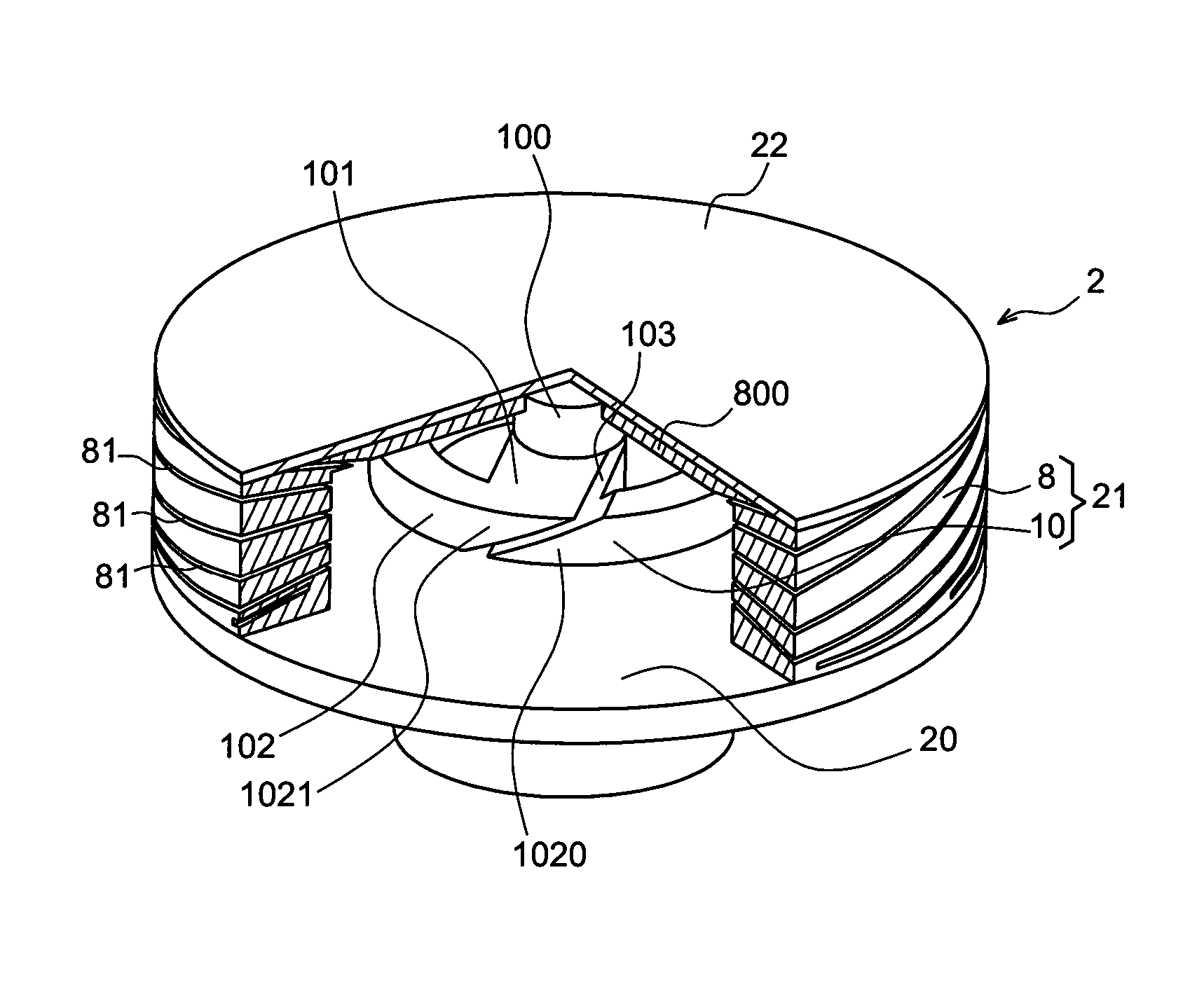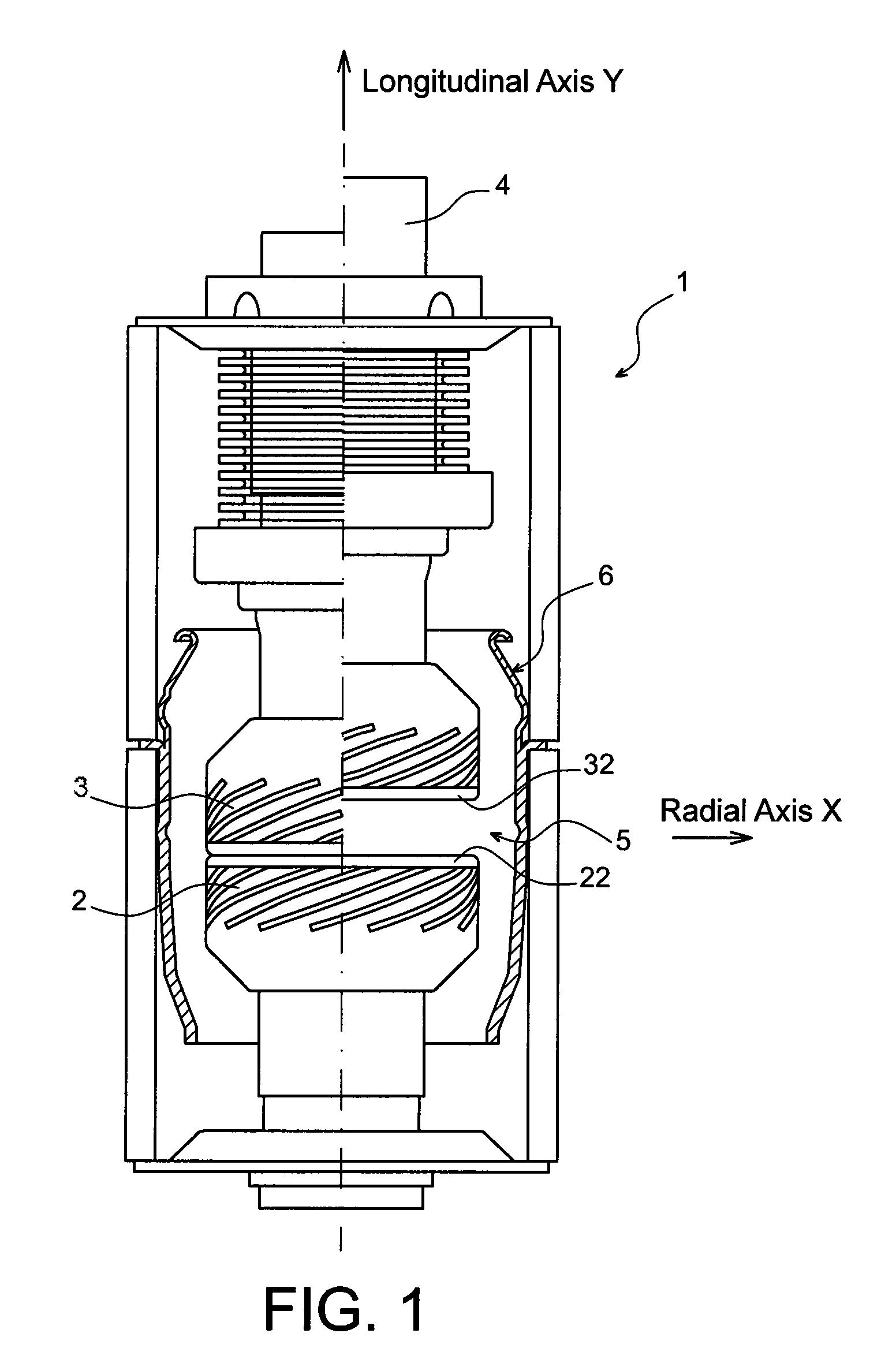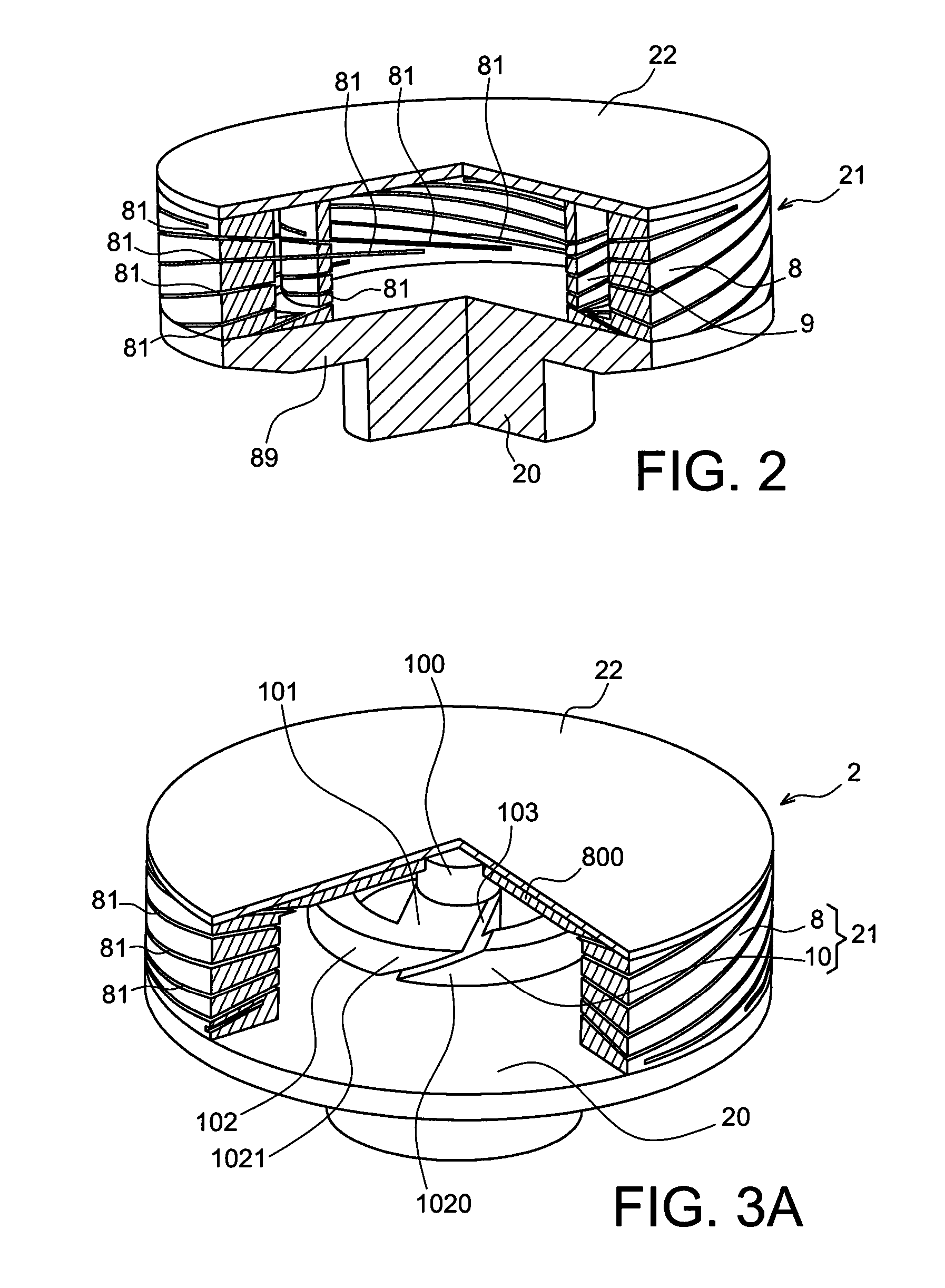Contact for a medium-voltage vacuum circuit-breaker with improved arc extinction, and an associated circuit-breaker or vacuum circuit-breaker, such as an AC generator disconnector circuit-breaker
a technology of vacuum circuit breakers and contact contacts, which is applied in the direction of air breakers, electrical switches, electrical apparatus, etc., can solve the problems of relatively low electrical resistance, contact magnetization and therefore subject to some degree of force, and achieves improved short-circuit current breaking performance, improved arc extinction, and improved arc extinction.
- Summary
- Abstract
- Description
- Claims
- Application Information
AI Technical Summary
Benefits of technology
Problems solved by technology
Method used
Image
Examples
Embodiment Construction
[0051]As shown in FIG. 1, a vacuum circuit-breaker 1 of the invention has a longitudinal axis Y and essentially includes a pair of contacts of which one contact 2 is stationary and the other contact 3 is moved by an operating rod 4 between an open position (the portion shown on the right-hand side) and a closed position (the portion shown on the left-hand side). The contacts 2 and 3 are of large size (diameter>35 mm).
[0052]The contacts 2, 3 in a vacuum circuit-breaker are usually separated to extinguish an arc that is liable to be produced in the space 5 between these contacts.
[0053]Whether in the closed position or the open position, the contacts 2, 3 are inside a shield 6 that is itself inside the jacket 7 of the circuit-breaker, within which there is a vacuum.
[0054]Breaking high alternating currents requires the arc that is generated to be controlled. The arc control means are usually an integral portion of the vacuum circuit-breaker. They must therefore ensure that the energy of...
PUM
 Login to View More
Login to View More Abstract
Description
Claims
Application Information
 Login to View More
Login to View More - R&D
- Intellectual Property
- Life Sciences
- Materials
- Tech Scout
- Unparalleled Data Quality
- Higher Quality Content
- 60% Fewer Hallucinations
Browse by: Latest US Patents, China's latest patents, Technical Efficacy Thesaurus, Application Domain, Technology Topic, Popular Technical Reports.
© 2025 PatSnap. All rights reserved.Legal|Privacy policy|Modern Slavery Act Transparency Statement|Sitemap|About US| Contact US: help@patsnap.com



